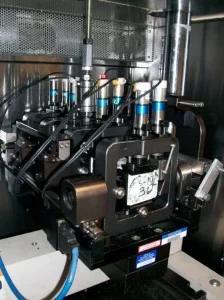Beneficial Use of Fly Ash for Concrete Construction in California


This blog posting is an excerpt from a presentation given at World of Coal Ash 2015 by Boris Stein. His presentation was based on a publication authored by: Boris Stein, Linas Vitkus, Robert Ryan, and John Halverson. Their publication is available here.
Use of Class F fly ash is vital to the development of concrete construction in California. Historically the demand for it has been driven by:
- The hot and dry climate of many counties necessitating better control of workability
- The aggressive environment of some coastal and desert areas (due to the presence of chlorides) necessitating the reduction of permeability of concrete
- Vast lands contaminated with sulfates necessitating the enhancement of sulfate-resistance of concrete
- The reactivity with alkali of many siliceous aggregate deposits necessitating mitigation of deleterious expansion
The demand for fly ash between 2015 and 2020 may double driven by:
- Growing concrete consumption
- State greenhouse gas legislation
Limited availability of other SCM - Governing concrete construction specifications requiring (i) the extension of service life, (ii) the reduction of consumption of non-renewable resources, and (iii) the reduction of embodied energy
- Rapidly developing construction of tall buildings, high-speed rail, sophisticated bridges, water conveying and retaining structures, all requiring high-performance concrete
- Growing mass concrete construction necessitating both the reduction of heat generation and mitigation of heat induced delayed ettringite formation
The relative average replacement rate of Portland cement with SCM is forecasted to increase from ~ 10% in 2014 to ~ 20% plus in 2020, mainly due to:
- Relative increase of consumption of concrete containing 20-30% of fly ash Class F by the total weight of cementitious material in the total volume of concrete produced with fly ash
- Increase in volumes of consumption of concrete containing 35-50% of binary SCM consisting of fly ash and ground granulated blast furnace slag
- Increase of the replacement rate of Portland cement with fly ash Class F in mass concrete (for such structures as foundations and dams) to 40-50%
- Inception of SCM produced from California mined pozzolans
When proportioning concrete and selecting the replacement rate of Portland cement with SCM, suppliers and contractors typically consider:
- Constructability
- Performance and prescriptive requirements of governing project technical specifications and standards
- Quality of construction
- Durability and service life
- Environmental aspects, among them carbon footprint and embodied energy
- Initial and life cycle costs
- Possible stimulus credits in recognition of value added by fly ash and/or other SCM
Some specific effects of fly ash, which most typically are considered when concrete is proportioned for constructability and performance, as well as case studies are provided in the presentation, which we are providing for download: WOCA 2015 – stein, ryan, vitkus, halverson presentation.



